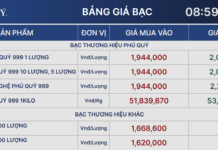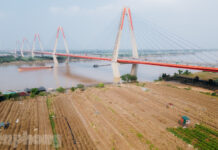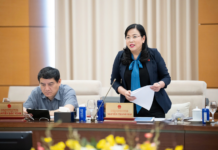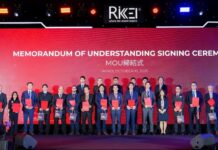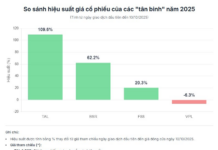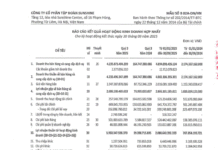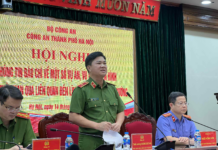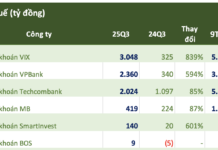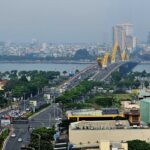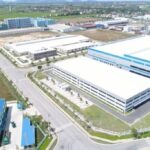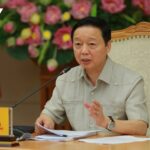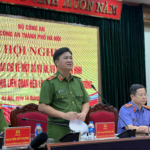On September 25th, Deputy Prime Minister Tran Hong Ha met with ministries and sectors to discuss the progress of the high-speed North-South railway project.
Creating a Lever for Economic Development
Reporting at the meeting, Deputy Minister of Transport Nguyen Danh Huy shared that the investment objective of the project is to construct a high-speed railway line to meet transportation demands, contribute to restructuring the transport market share on the North-South corridor optimally and sustainably, and create a premise and driving force for socio-economic development while ensuring national defense and security.
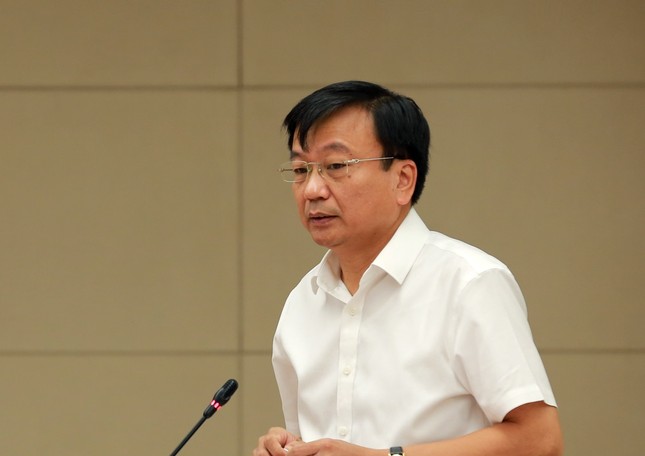
Deputy Minister of Transport Nguyen Danh Huy reporting at the meeting
According to the pre-feasibility study report, the new high-speed railway line will be double-tracked, with a speed design of 350 km/h, a width of 1,435 mm, electrification, and a load of 22.5 tons/axis. The line will be approximately 1,541 km long, with 23 passenger stations and 5 freight stations. This line will primarily transport passengers but can also serve national defense and security purposes and transport freight if necessary. Meanwhile, the existing North-South railway line will focus on freight transportation and short-distance tourism.
The Ministry of Transport sets the goal of approving the investment policy for the high-speed railway project before 2025, completing land clearance and starting construction before 2030, and completing the entire line before 2045.
The project’s starting point is in Hanoi, at the Ngoc Hoi Station (the southern transport hub of the Hanoi railway network), and the endpoint is in Ho Chi Minh City, at the Thu Thiem Station (the eastern transport hub of the Ho Chi Minh City railway network).
The project will pass through 20 provinces and cities, including Hanoi, Ha Nam, Nam Dinh, Ninh Binh, Thanh Hoa, Nghe An, Ha Tinh, Quang Binh, Quang Tri, Thua Thien-Hue, Da Nang, Quang Nam, Quang Ngai, Binh Dinh, Phu Yen, Khanh Hoa, Ninh Thuan, Binh Thuan, Dong Nai, and Ho Chi Minh City.
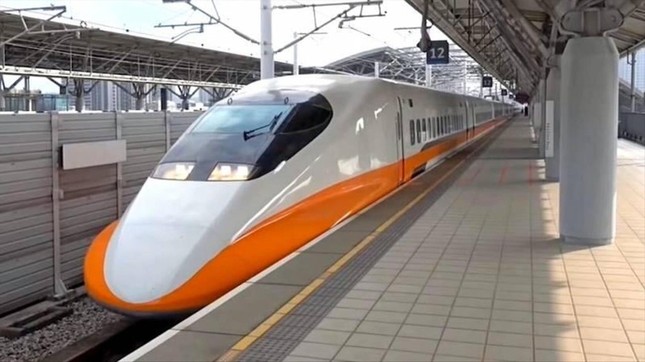
The high-speed railway project is expected to create a boost for economic and social development.
At the meeting, delegates expressed that investing in a large-scale project like the North-South high-speed railway requires disciplined financial management to focus investments and create a lever for development.
Leaders of the ministries and sectors clarified some specific mechanisms and policies in the pre-feasibility study report to be submitted to the National Assembly in the upcoming session, including investment forms, capital mobilization solutions, implementation plans for connecting with other transport modes, orientations for developing the railway industry and services, efficient exploitation of land funds along the route, and decentralization for ministries, sectors, and localities.
Exploiting Land Funds Along the Route to Reduce Costs
Concluding the working session, Deputy Prime Minister Tran Hong Ha suggested considering and researching the option of extending the high-speed railway line from Mong Cai to Ca Mau, in addition to the current scope from Hanoi to Ho Chi Minh City.
Mr. Ha requested the Ministry of Transport to analyze the benefits and advantages of investing in the entire line, which will connect seamlessly with other transport modes, compared to investing in certain sections first. He also emphasized assessing the effectiveness of the high-speed railway dedicated to passenger transportation (or combining freight transportation if necessary) for the entire economy, not just the railway industry.
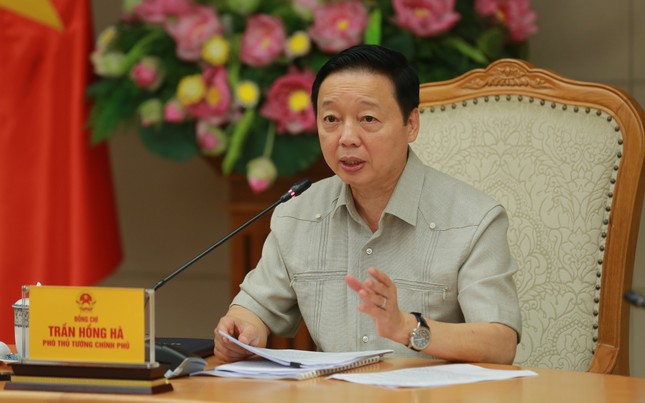
Deputy Prime Minister Tran Hong Ha speaking at the meeting
Additionally, Mr. Ha noted that the pre-feasibility report should reflect the view of constructing the railway line with a speed design of 350 km/h as straight as possible, “going through mountains and bridging rivers.”
Regarding the investment implementation form, the Deputy Prime Minister requested the Ministry of Transport to propose specific mechanisms and policies on investment allocation, central and local budget allocation for one time or in five-year phases, and the utilization of bonds, ODA, and other legal sources, taking advantage of the remaining public debt ceiling.
Deputy Prime Minister Tran Hong Ha emphasized the need to “assign tasks” to private enterprises to mobilize external resources from land funds along the high-speed railway line to reduce costs and the state’s resources.
The Deputy Prime Minister assigned the Ministry of Industry and Trade to take the lead, in coordination with the Ministry of Transport, the Vietnam Railway Authority, the Vietnam Railway Corporation, and some large enterprises, to build and implement a roadmap for receiving, transferring, and mastering railway technology and developing the railway industry, from manufacturing equipment to operation and management, ensuring synchronization in technology, standards, and norms.
“Let’s use the development of high-speed railways, urban railways, and Vietnamese railways in general to create a driving force for the mechanical, manufacturing, automation, and other industries serving the country’s economy and people’s livelihoods,” emphasized the Deputy Prime Minister.
The Ministry of Education and Training was assigned to take the lead, in coordination with the Ministry of Transport, to build and implement human resource training ahead of time, so that we are ready to receive, master, and be autonomous in technology, technical design, equipment manufacturing, operation, and management in the railway industry.
“GRDP of Nghe An Province Estimated to Increase by 7.5-8% in the First Nine Months, with Notable Highlights in Investment Attraction”
The latest figures show a positive shift in Nghe An’s economic growth rate for the third quarter, outperforming the first and second quarters.
High-Speed North-South Railway: A Careful Choice of Technology and Management Model
On the morning of September 25, at a meeting on the implementation of the high-speed railway project on the North-South axis, Deputy Prime Minister Tran Hong Ha emphasized the careful selection of technology, management models, and operations towards the development of a complete and autonomous railway industry and service.
The Cost of High-Speed Rail in Vietnam: $43.69 Million for 1 km of Track, with 60% on Viaducts to Ensure a Straight Route
The pre-feasibility report for the high-speed North-South railway project by the Ministry of Transport estimates the project’s investment rate at $43.69 million per kilometer. This ambitious venture promises to revolutionize transportation in the region, offering unprecedented speed and efficiency. With a projected investment of $43.69 million per kilometer, this project is poised to become a landmark infrastructure development, shaping the future of travel and connectivity in the area.

